Ten must-see villages in Switzerland
1. Ascona
Located on the northern shore of Lake Maggiore, Ascona is the lowest village in Switzerland, in the vicinity of Locarno: it is therefore in the canton of Ticino, where Italian is the official language. The relaxing strolls along the lakefront, which can be reached by following the small streets that branch off into the old town, which is full of outdoor cafes, make it a popular resort, not least because of its mild climate and Mediterranean flavor. The village has been reported to have been inhabited since prehistoric times: archaeological excavations have revealed in the San Materno area tombs belonging to a necropolis dating from the Bronze and Iron Ages, while remains from the Neolithic period have been found on the hill of San Michele. In the Middle Ages it was an important marketplace protected by castles: the Castello di San Michele, the Castello dei Carcani, and the Castello di San Materno; all that remains of the latter is the Romanesque-era chapel inside whose apse is a fresco depicting Christ.
Near Ascona is Monte Verità, where in the early 20th century a colony of reformers was born who spent and spread an alternative life linked to nature, naturism, a vegetarian diet and the unity of body and soul. They included writers, poets, and artists, including Otto Gross, Hermann Hesse, Rainer Maria Rilke, Isadora Duncan, Hans Arp, and many many others. Today the mount houses the seminar center of the Universities of Lucerne and Zurich, and the history of the particular colony is illustrated in a dedicated museum. The village’s old historic center is centered around the Church of St. Peter and Paul, a basilica with a tall bell tower that is the symbol of the village: several works of art are preserved inside, such as frescoes by Pier Francesco Mola and the Coronation of the Virgin altarpiece by Giovanni Serodine. Other places of interest are the church of Santa Maria della Misericordia with scenes from the Old Testament, 15th- and 16th-century frescoes and a Renaissance polyptych; the Papio college with its elegant cloister; and the 17th-century Serodine house, whose facade is richly decorated with stucco, friezes and figures and at the hundred the Virgin and Child.
In June, the town hosts JazzAscona, one of the most famous festivals dedicated to jazz and New Orleans Beat.
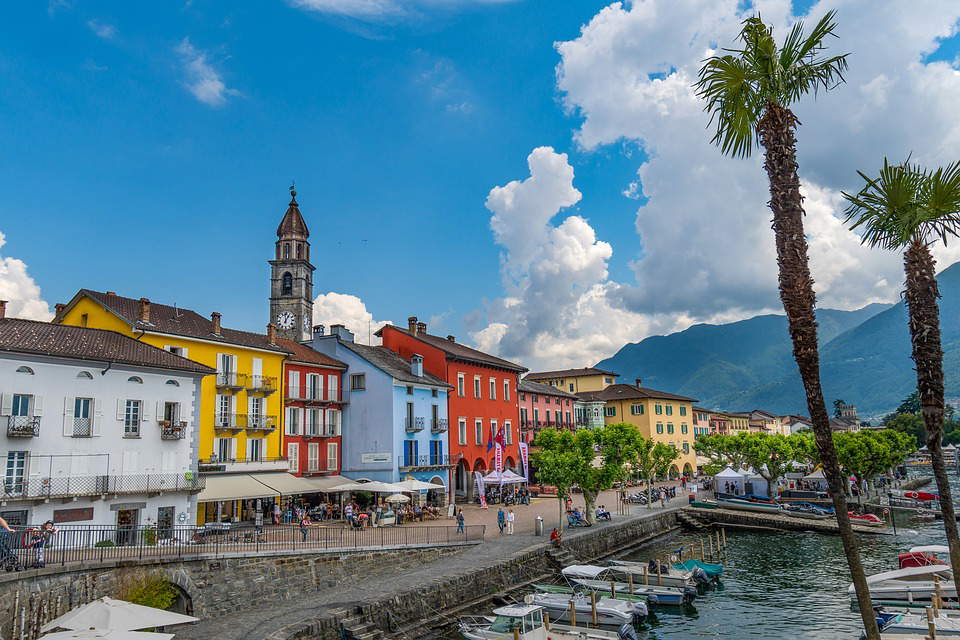 |
| Ascona |
2. Avenches
In Canton Vaud, in the Broye-Vully district, stands on a hill, just a few kilometers from Fribourg, the hamlet of Avenches, the ancient capital of Roman Helvetia. Founded in the early first century AD, Aventicum (as it was called in ancient times) became in the year 71 a colony of Emperor Vespasian. Surrounded by six-kilometer-long walls, it reached its most prosperous period in the 2nd century, when it had 20,000 inhabitants. The history of Avenches is closely linked to Roman times, which is still witnessed by the presence of remains from that period, starting with the great amphitheater, the best-preserved Roman theater in all of Switzerland that could seat 10 thousand to 12 thousand spectators. The Roman Museum then brings together a rich collection of Gallo-Roman objects of some significance, including a copy of the gold bust of Emperor Marcus Aurelius. A fortified tower from the 11th century stands out at the far end of the amphitheater. Not far from here also stands one of the finest Renaissance castles in the canton, built by the bishops of Lausanne in the late 13th century and transformed and enlarged in the 16th century by the Bernese bailiffs. Also still visible from the Roman period are remains of the baths, the capitol and the so-called “temple of the stork,” so named because on the 12-meter-high column storks often built their nests in the past. From the end of the Middle Ages, the Roman area became a quarry for building materials, so almost all the monuments disappeared.It is since 1885 that frequent excavations and appropriate measures have promoted the preservation of the archaeological site. Also worth seeing are the church of St. Mary Magdalene, dating from the late 11th century, the 18th-century town hall with its characteristic facade ending in a carved pediment with figures of two Moors holding the town’s coat of arms. Also of note are typical houses dating from the late Gothic period.
The surrounding landscape offers terraced vineyards and nature reserves to be explored on foot or by bicycle.
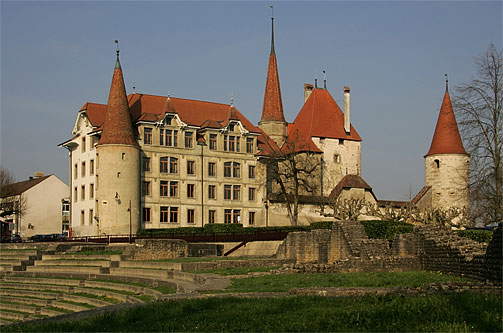 |
| Avenches |
3. Aarburg
In German-speaking Switzerland, specifically in Canton Aargau, lies Aarburg, bounded on one side by the Aare River and on the other side by the wedge-shaped rocky ridge on which it stands, respectively. Prominent on the latter is the famous castle, built in the early 12th century; the Counts of Frohburg ruled here from 1299 until 1415 by the Habsburgs, when they were driven out by the Bernese, and in the course of the Bernese Seigniory, which saw an end with Napoleon’s French invasion in 1798, the castle and village grew to its present size. In 1840 a fire destroyed the houses on the mountainside and the church, which was rebuilt in the neo-Gothic style. Today the wedge-shaped main square features a row of houses from the Middle Ages and a row from the 19th century. The old historic core enchants with its impressive buildings, and a long concrete bridge allows people to cross the river (the first bridge over the Aare was opened in 1837). Aarburg is located along the “Swiss Mozart Route,” a route stretching from the French border at Geneva to the German border at Schleitheim that is the route through Swiss territory taken by the Mozart family (parents Leopold and Anna Maria, children Marianne and Wolfgang Amadeus) in 1766.
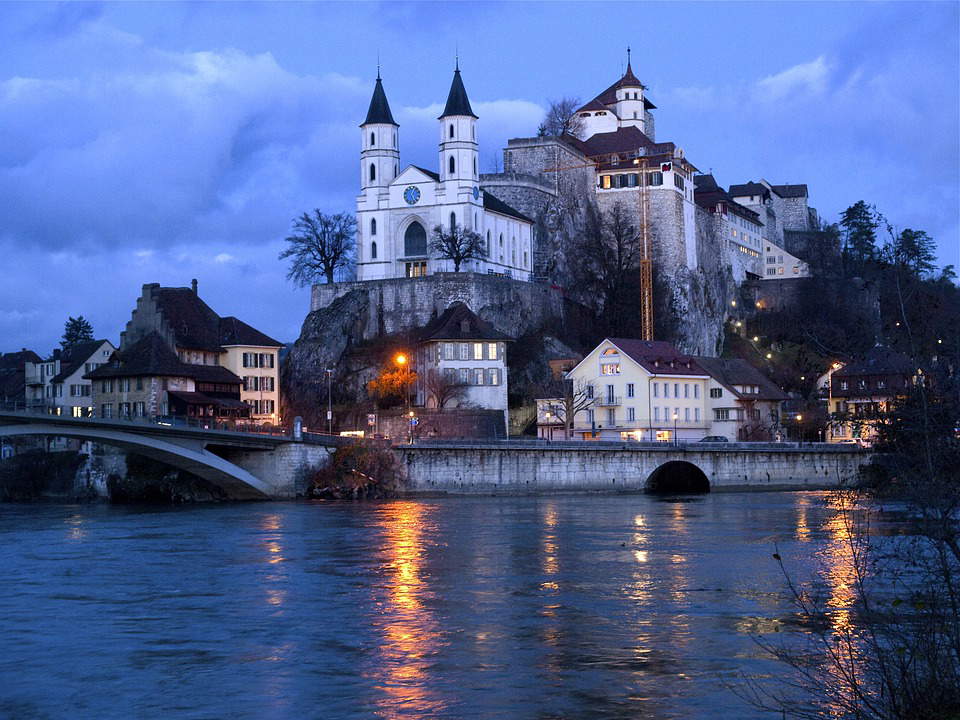 |
| Aarburg |
4. Wengen
A renowned ski resort where the Lauberhorn, the longest downhill slope in the Alpine Ski World Cup, is located and where the Lauberhornrennen, a famous race, has been held since 1930, Wengen is located in Canton Bern, in the Oberland region, at an altitude of 1274 meters (2,774 feet) in the Bernese Alps. It is mainly linked to tourism, but is completely closed to automobile traffic: in fact, it can be reached via the Wengernalpbahn rack railway. The resort still looks like a picture-postcard mountain village, with its typical wooden houses, chalets that are the destination of many tourists who come here to relax and enjoy themselves, especially in winter, and Belle Époque-style hotels. In summer, it is possible to go on hikes that lead to the most scenic spots, for example along the road between Wengen and Little Scheidegg to admire the Eiger, Mönch and Jungfrau mountains, but it is also possible to try paragliding, river rafting and canyoning.
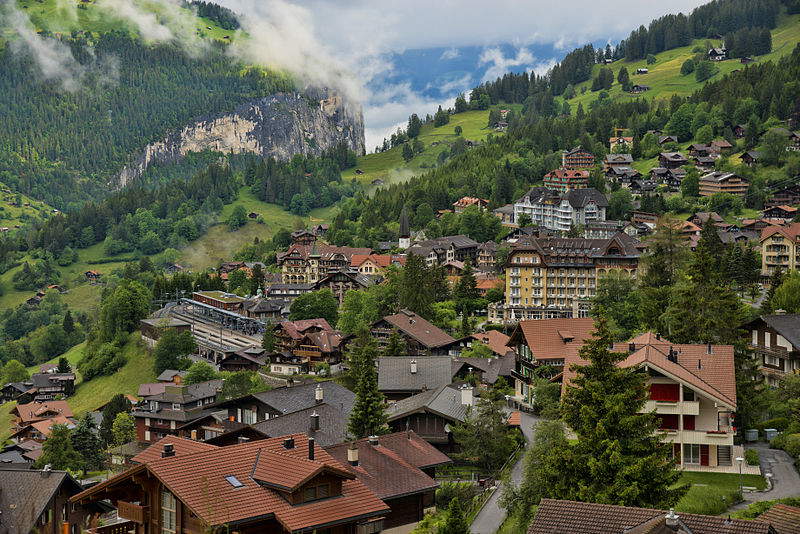 |
| Wengen |
5. La Neuveville
In Canton Bern, in the Bernese Jura region, is La Neuveville, a pearl on Lake Biel. A small village that offers picturesque scenery on both the lakeshore and the mountains, vineyards and an old town with medieval buildings. Dominating from above is Schlossberg Castle, built between 1283 and 1288 at the behest of the prince-bishop of Basel Heinrich von Isny and which became the castellan’s residence until the 16th century. Abandoned, it fell into a dilapidated state, risking demolition; fortunately it was later saved by restoration work carried out in 1884 and 1931. At the entrance to the historic center is the Banneret Fountain. See the White Church with magnificent frescoes and stained glass windows, the Red Tower, the St. Catherine Chapel converted in 2004 into a café-theater, and the Maison des Dragons with the characteristic dragon-shaped gargouilles from which it derives its name.
The village was founded in 1312 by the Bishop of Basel, and the oldest part is shaped like an almost perfect square. As a result of its location enclosed between the lake and the mountains, La Neuveville has remained contained in its size and still retains its ancient core and surrounding walls.
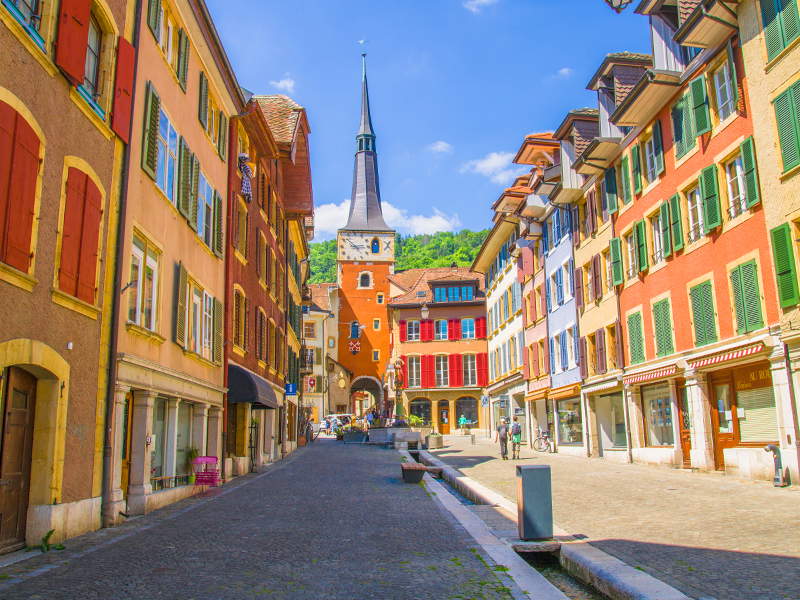 |
| La Neuveville. Ph. Credit The Most Beautiful Villages in Switzerland |
6. Morcote
Once a fishing village, Morcote lies on the shores of Lake Lugano in the canton of Ticino, and because of its beauty and elegance it is known as “the pearl of Ceresio.” The historic center, of medieval layout, is characterized by winding, cobbled streets; on the lakefront, where boats dock, the many stately buildings, including the Palazzo Paleari, and the many arches that have now become a typical feature of Morcote, stand out. The village is dominated by the frescoed church-sanctuary of Santa Maria del Sasso, which can be reached by climbing no less than four hundred steps: from up there one can enjoy a beautiful view of the village and the lake, and inside the church one can admire frescoes from various periods, an 18th-century organ and a stone dome. Next to the sanctuary is a chapel and a monumental cemetery.
Also worth a visit is the famous Scherrer Park, created by Arturo Scherrer, a St. Gallen textile merchant: the rich subtropical vegetation with palm trees, camellias, bamboos and many other fragrant species makes the park a true natural jewel.
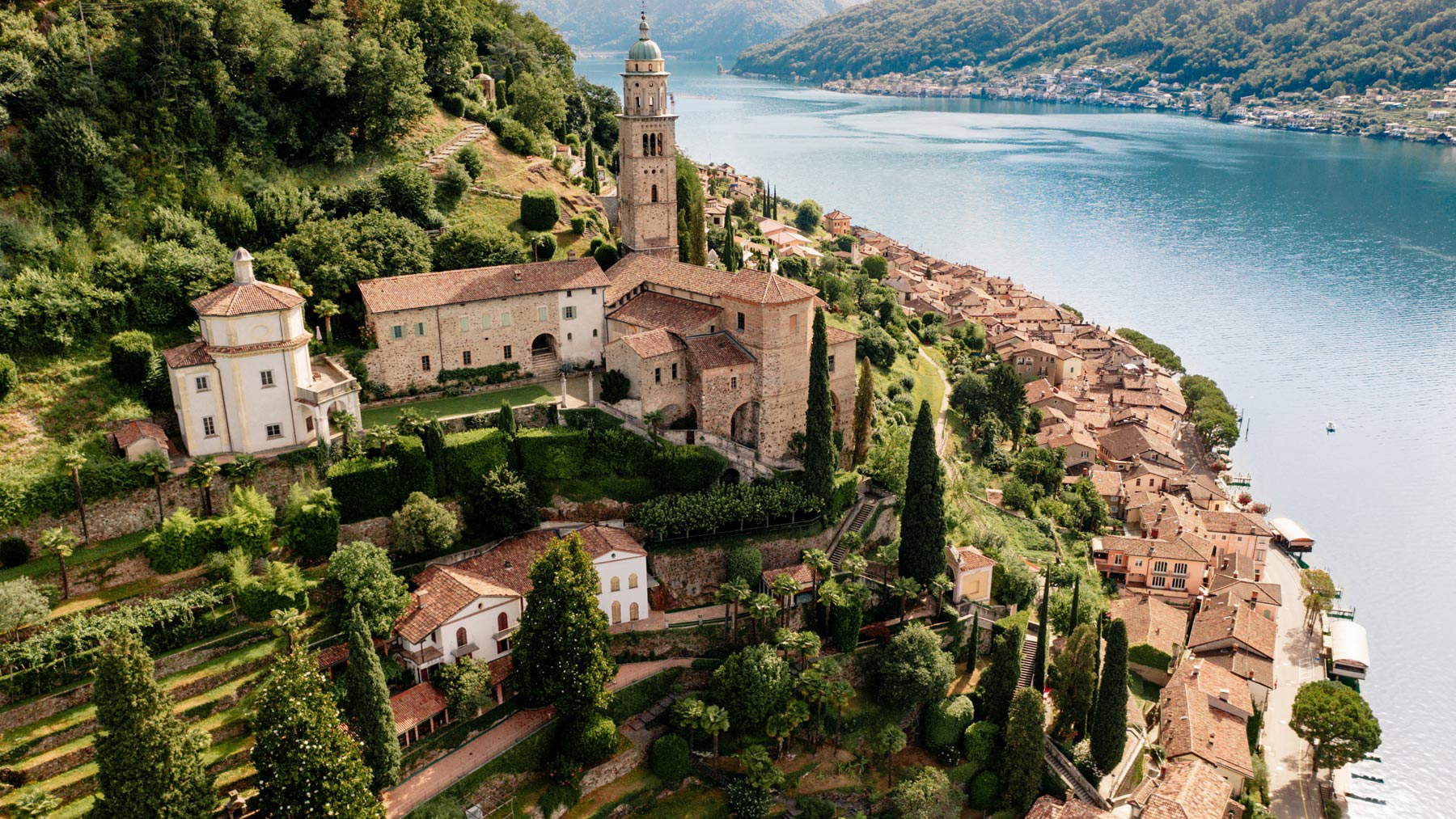 |
| Morcote. Ph. Credit Switzerland Tourism |
7. Grandson
Grandson is located in Canton Vaud and overlooks Lake Neuchâtel. Its history is strongly linked to the lords of Grandson who played a prestigious role from the 10th to the 14th century, until 1397 when it reached its end with Otto III. Their castle, now known as Grandson Castle, was known in the 1100s as Castrum Grancione: it currently houses a museum with a historical collection of arms and a collection of automobiles. The castle constitutes one of the largest fortresses in Switzerland, and inside you can see a hall of arms, a splendid knights’ hall with stalls from 1620, and, in the 16th-century chapel, an altarpiece by Jan Metsys. In 1476 the village was the scene of a battle as part of the Burgundian wars, which ended with the victory of the Confederates over Charles the Bold. Sights also include the evangelical church of St. John the Baptist built on the foundations of a 10th-11th century shrine, the town hall that features a typical pediment on the façade with the village’s coat of arms, and the Casa del Balivo with its 18th-century façade preceded by a double flight of steps. A menhir is visible on the road leading to the village.
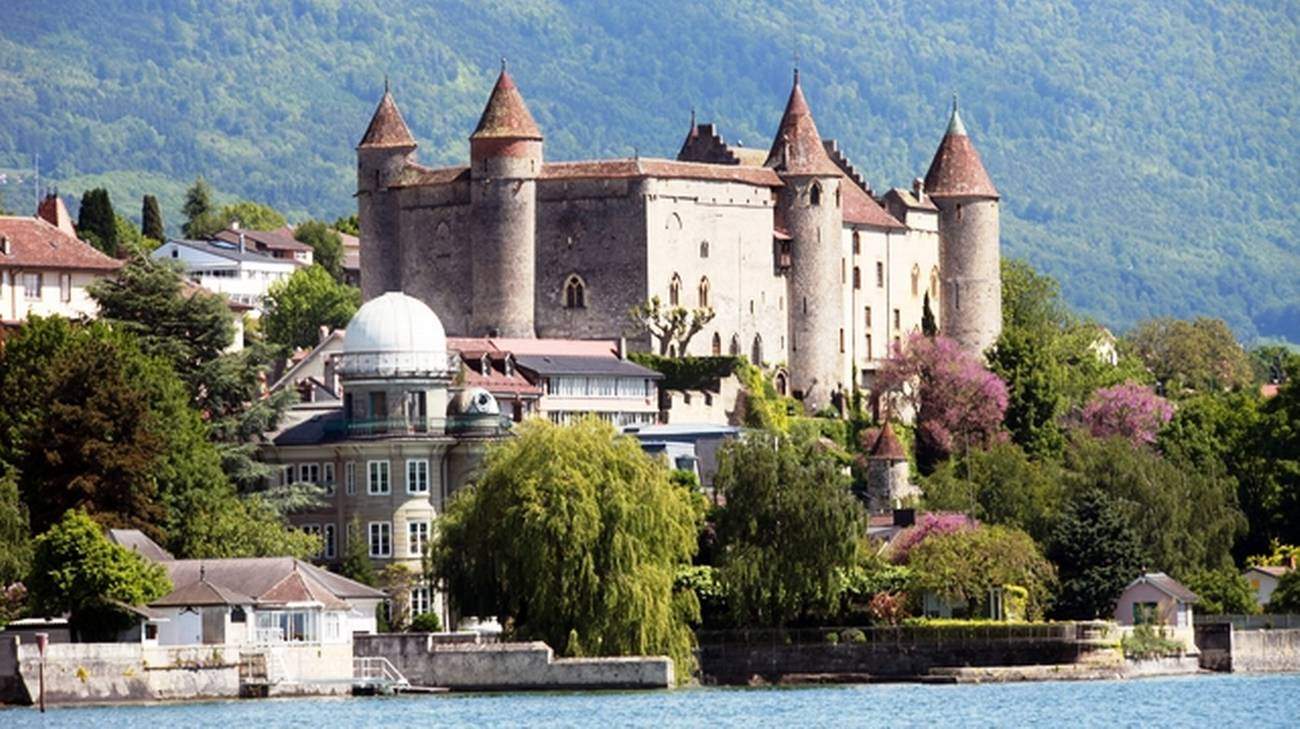 |
| Grandson. Ph. Credit RSI Radio and Television Switzerland |
8. Bremgarten
About twenty kilometers from Zurich is the village of Bremgarten, in the center of the Reuss Valley in Canton Aargau. Its strong point is its scenic one, since it is surrounded on three sides by the river and belongs to an area of Switzerland very rich in unspoiled natural landscapes. However, its historic center possesses an important cultural value, as here in ancient times literati, humanists and prominent figures met, including the poet Johannes von Al and the reformer Heinrich Bullinger.
The village appears to be sharply divided into two parts, an upper and a lower part, and has preserved its medieval and baroque architectural heritage intact. A long bridge crosses the Reuss River.
Bremgarten has a wealth of chapels and churches not to be missed: these include the late Gothic St. Nikolaus Church, St. Anne’s Chapel now the baptistery, the 15th-century Chapel of Our Lady, made Baroque in the 18th century, which houses a cycle of late Gothic frescoes and a Rococo altar. Also, the former Capuchin monastery church and the former Muri-Amtshof, which features rich decoration inside.
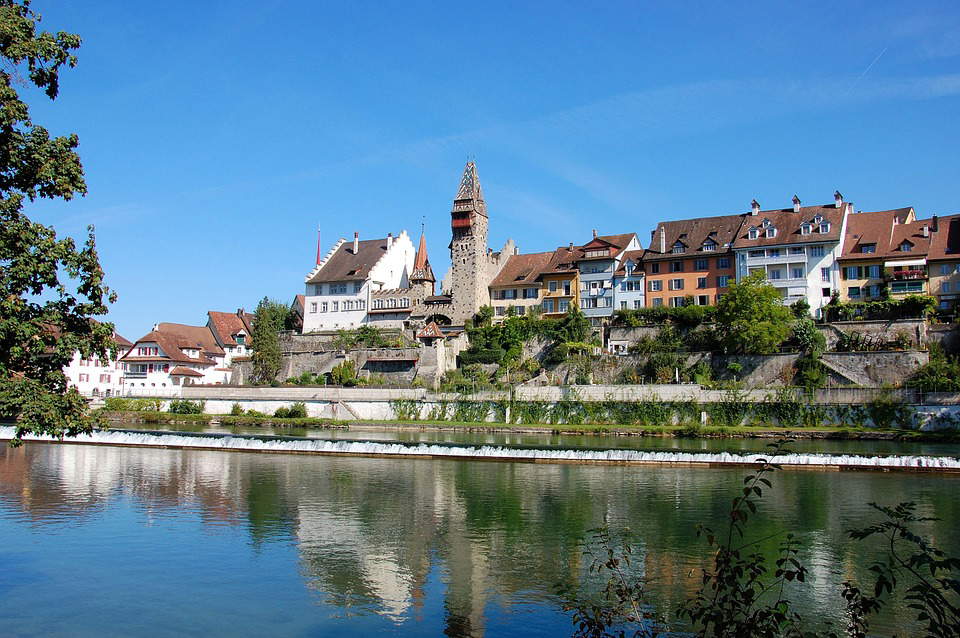 |
| Bremgarten |
9. Porrentruy
In Canton Jura, Porrentruy is considered an important cultural center. It has long been the seat of the prince-bishops of Basel, residing in the castle overlooking the town. The oldest part of the castle includes the Réfouse Tower, the Residence, the Chancellerie and the Rooster Tower; later, however, are the apartment of Princess Christina of Sweden, the Torre de la Monnaie and the Roggenbach Chapel, rich in stucco work. Still visible at the foot of the castle is the Porte de France, built in 1563, which was part of the medieval fortifications. The historic center consists of Baroque, Gothic, and neoclassical houses and large fountains, such as the Samaritan Fountain and the Schweizerbrunnen. Worth seeing are the town hall, which combines French architecture with the extravagances of southern German Baroque, and the churches of Saint Pierre and Saint Germain, which hold rare side altars and ecclesiastical treasures. The Jura region is particularly rich in precious stained-glass windows in churches and chapels: here is the largest concentration of glass paintings in Europe. Finally, the Hôtel des Halles, a late Baroque building of French inspiration, and the Hôtel de Gléresse, which houses a considerable collection of books and manuscripts, are worth seeing.
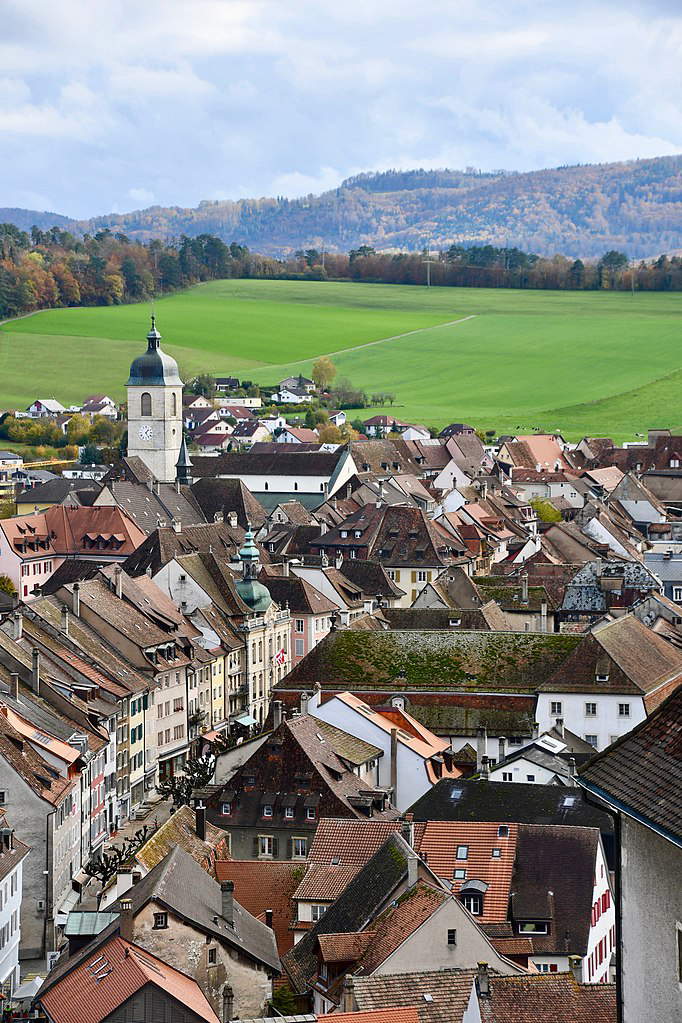 |
| Porrentruy. Ph. Credit Switzerland Tourism |
10. Evolène
Evolène is located in Canton Valais, in the district of Hérens. It looks like a very quaint village, with wooden or terracotta houses with stone doors and windows and frescoed facades. Its name, meaning “easy water,” refers to the presence of a stream that flows within the village. The typical buildings are accompanied by a strong feeling for traditions: in fact, several festivals related to the area are held in Evolène throughout the year. Worth seeing is the parish church of St. John. Not to be missed nearby are the famous earth pyramids of Euseigne, among the most significant tourist attractions in the Alps: these are 10- to 15-meter-high geological formations that originated between 80,000 and 10,000 years ago, in the final phase of the Würm glaciation.
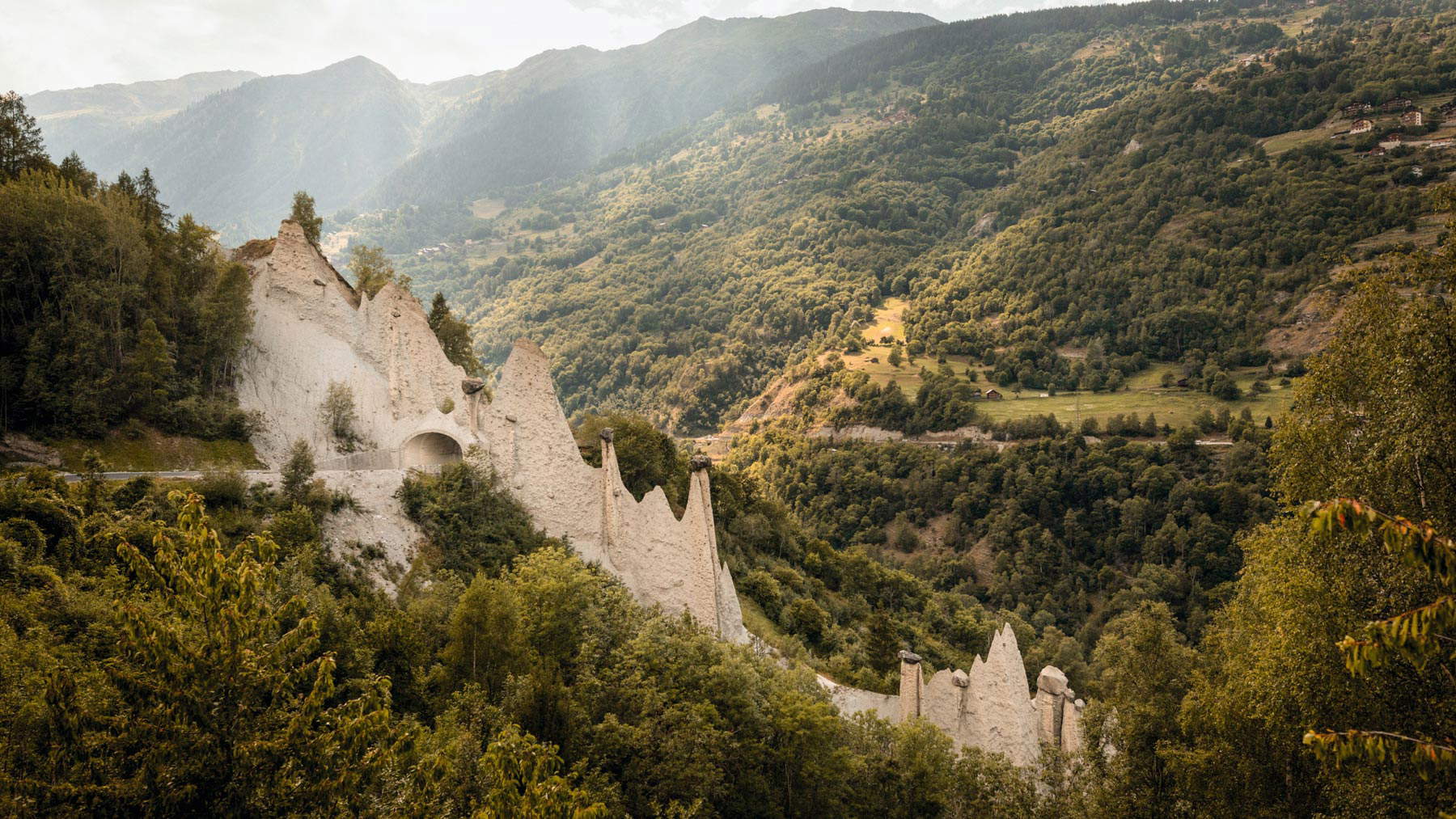 |
| Evolène, the pyramids of Euseigne |
 |
| Ten must-see villages in Switzerland |
Warning: the translation into English of the original Italian article was created using automatic tools. We undertake to review all articles, but we do not guarantee the total absence of inaccuracies in the translation due to the program. You can find the original by clicking on the ITA button. If you find any mistake,please contact us.


























